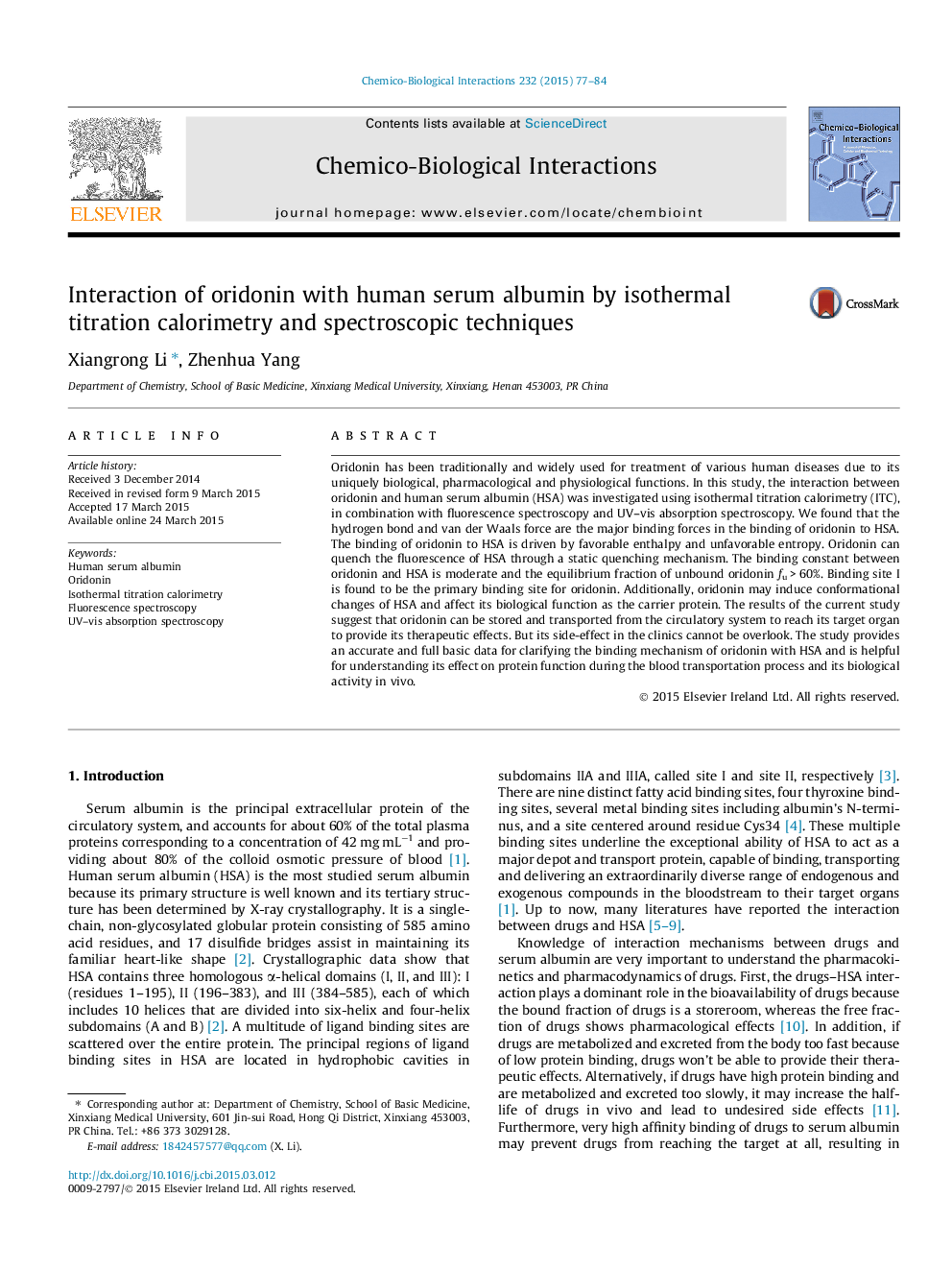| Article ID | Journal | Published Year | Pages | File Type |
|---|---|---|---|---|
| 2580205 | Chemico-Biological Interactions | 2015 | 8 Pages |
•Oridonin–HSA system is driven by hydrogen bond and van der Waals force.•Oridonin can quench the fluorescence of HSA through a static quenching.•Oridonin can be stored and carried by HSA to reach its target organ.•Binding site I is the primary binding site for oridonin.•Oridonin may induce microenvironmental changes of HSA.
Oridonin has been traditionally and widely used for treatment of various human diseases due to its uniquely biological, pharmacological and physiological functions. In this study, the interaction between oridonin and human serum albumin (HSA) was investigated using isothermal titration calorimetry (ITC), in combination with fluorescence spectroscopy and UV–vis absorption spectroscopy. We found that the hydrogen bond and van der Waals force are the major binding forces in the binding of oridonin to HSA. The binding of oridonin to HSA is driven by favorable enthalpy and unfavorable entropy. Oridonin can quench the fluorescence of HSA through a static quenching mechanism. The binding constant between oridonin and HSA is moderate and the equilibrium fraction of unbound oridonin fu > 60%. Binding site I is found to be the primary binding site for oridonin. Additionally, oridonin may induce conformational changes of HSA and affect its biological function as the carrier protein. The results of the current study suggest that oridonin can be stored and transported from the circulatory system to reach its target organ to provide its therapeutic effects. But its side-effect in the clinics cannot be overlook. The study provides an accurate and full basic data for clarifying the binding mechanism of oridonin with HSA and is helpful for understanding its effect on protein function during the blood transportation process and its biological activity in vivo.
Graphical abstractFigure optionsDownload full-size imageDownload as PowerPoint slide
